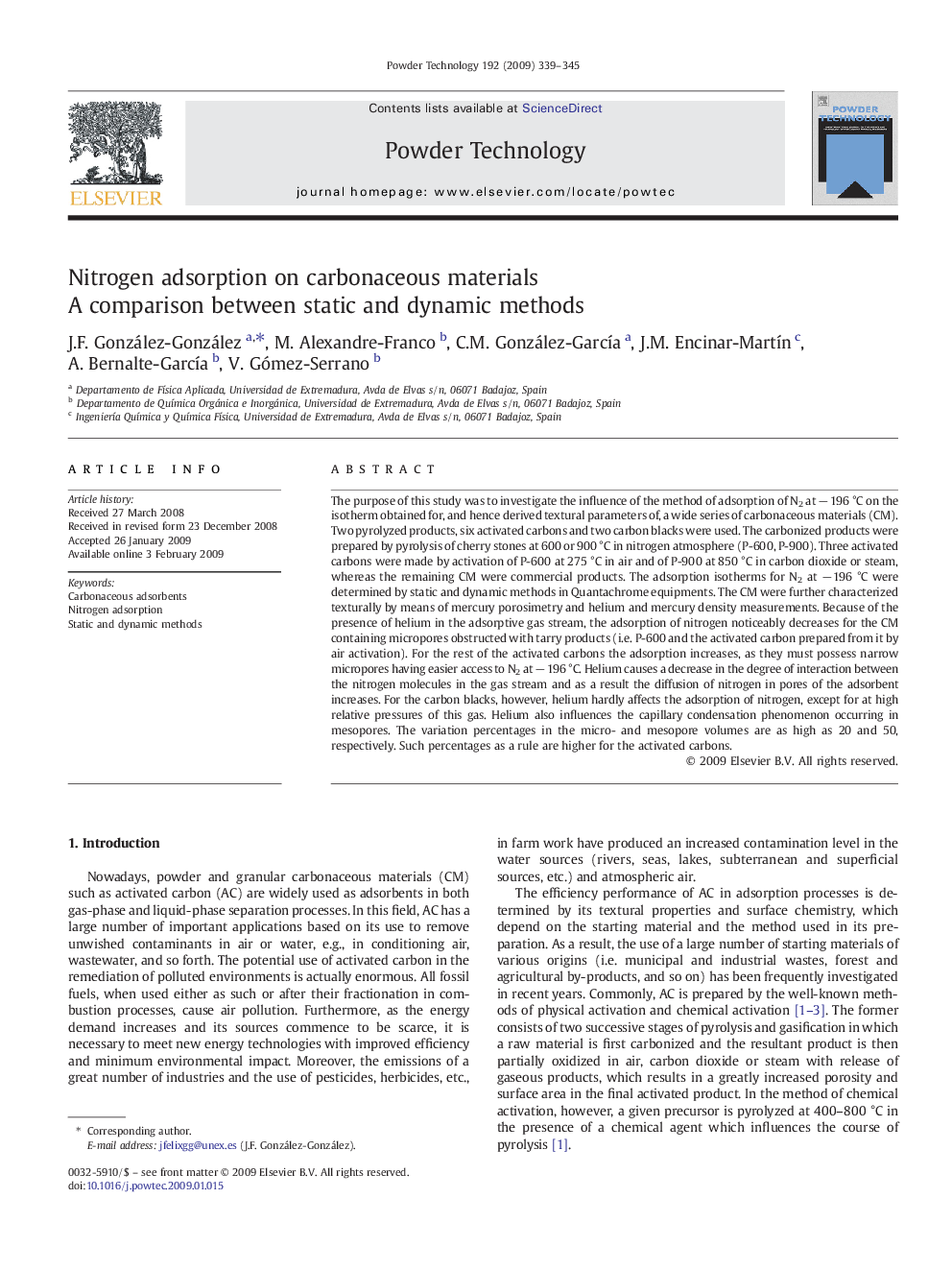| Article ID | Journal | Published Year | Pages | File Type |
|---|---|---|---|---|
| 238445 | Powder Technology | 2009 | 7 Pages |
The purpose of this study was to investigate the influence of the method of adsorption of N2 at − 196 °C on the isotherm obtained for, and hence derived textural parameters of, a wide series of carbonaceous materials (CM). Two pyrolyzed products, six activated carbons and two carbon blacks were used. The carbonized products were prepared by pyrolysis of cherry stones at 600 or 900 °C in nitrogen atmosphere (P-600, P-900). Three activated carbons were made by activation of P-600 at 275 °C in air and of P-900 at 850 °C in carbon dioxide or steam, whereas the remaining CM were commercial products. The adsorption isotherms for N2 at − 196 °C were determined by static and dynamic methods in Quantachrome equipments. The CM were further characterized texturally by means of mercury porosimetry and helium and mercury density measurements. Because of the presence of helium in the adsorptive gas stream, the adsorption of nitrogen noticeably decreases for the CM containing micropores obstructed with tarry products (i.e. P-600 and the activated carbon prepared from it by air activation). For the rest of the activated carbons the adsorption increases, as they must possess narrow micropores having easier access to N2 at − 196 °C. Helium causes a decrease in the degree of interaction between the nitrogen molecules in the gas stream and as a result the diffusion of nitrogen in pores of the adsorbent increases. For the carbon blacks, however, helium hardly affects the adsorption of nitrogen, except for at high relative pressures of this gas. Helium also influences the capillary condensation phenomenon occurring in mesopores. The variation percentages in the micro- and mesopore volumes are as high as 20 and 50, respectively. Such percentages as a rule are higher for the activated carbons.
Graphical abstractIn the present study, a wide series of carbonaceous materials has been characterized texturally by nitrogen physical adsorption. The influence of the dynamic or static method of N2 adsorption at − 196 °C on the measured isotherm and derived textural parameters of the adsorbents has been then investigated.Figure optionsDownload full-size imageDownload as PowerPoint slide
